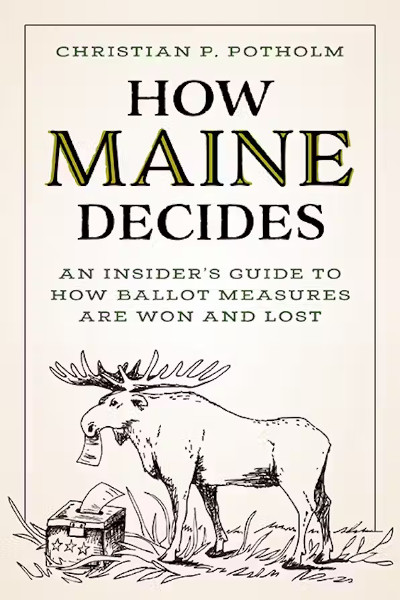
Ballot measures and how they should be implemented are the subject of Posolm’s latest book. How Maine is decided: An insider’s guide to winning and losing ballot measures (Downeast Books, 2024).
The book has been called “entertaining and informative” by Senator Angus King, “honest, enlightening and just plain fun to read” by former US Secretary of Defense Bill Cohen, while former Maine Governor John Baldacci has said it is essential reading for anyone wanting to get involved in referendums.
Posolm, the DeAlba Stanwood Alexander Professor of Political Science Emeritus at Bowdoin College, has decades of experience not only as a scholar but also as a political strategist and organizer.
He has worked on many of Maine’s major ballot measures, from the Maine Yankee Referendum in 1980, which allowed Maine to keep the Wiscasset Nuclear Power Plant open, to same-sex marriage in 2012, when Maine became the eighth state to legalize same-sex marriage.
Posolm’s career also includes 10 years as a national pollster and strategist for the Nature Conservancy, where he worked on various questions for “Land for Maine’s Future,” which authorized state funds to purchase land for conservation purposes. He then worked to implement similar conservation measures in several other states, including Colorado, New Mexico, Montana, Florida, Rhode Island and Virginia, losing only one state in the process.
Plus, Maine has always been a relatively cheap state to buy television ads, so it’s not uncommon for outside groups to introduce ballot measures here to gain political momentum, Posolm added.
Posolm explained that ballot measures require an entirely different approach than working on an individual campaign: “In a referendum, you often get 40 percent of the electorate to vote, whereas in a candidate’s campaign you’re lucky if you get 8 to 10 percent to vote.”His extensive experience with ballot measures led Posolm to develop certain principles that he calls “axioms” in the book, which serve as guidelines for running successful ballot measures.
Each of the book’s 14 chapters is dedicated to a particular principle: one is titled “Ballot Measures Are Different from Candidate Measures,” for example, another shows how friends and allies can do more harm than enemies, and a third deals with the unique importance of the French-American vote in Maine.

